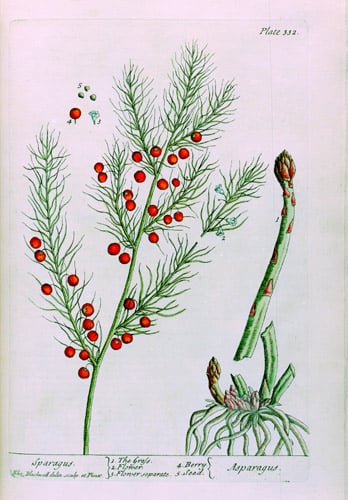
Native to maritime habitats of Europe and western temperate Asia, asparagus is a herbaceous perennial and member of the Asparagaceae plant family that also includes yucca, hosta, and spider plant. It has been cultivated since 3000 BC and pictures from the tombs of the ancient Egyptians suggest that spears of the plant were used as gifts for the gods. The Greeks enjoyed wild asparagus but the Romans developed special gardening techniques to ensure a good supply because they valued the plant for both its medicinal and culinary attributes. A collection of recipes from the lst century AD includes one for asparagus, and the ancient Roman naturalist, Pliny the Elder (d. 79 AD), notes its use as a diuretic and aphrodisiac. He also lists many ailments that can be treated by using remedies made from the seed, roots and stalks of the plant, ranging from stomach upset and chest pains to elephantiasis. A fresco from the House of the Vettii shows a bundle of asparagus with a small donkey and rush baskets filled with ricotta.

Description: Asparagus grows up to 60″ tall and has a root system, known as a crown. In spring, the crown sends up thick green or purple edible shoots with triangular bracts along their surface. If the stems are not harvested for eating, they become multibranched and bear feathery foliage of needle-like leaves as they mature. In summer, male and female flowers appear singly or in clusters of 2-3 at the junctions of the branchlets, usually on different plants. The bell-shaped flowers are up to 1/4 ” long and have 6 greenish-yellow to white tepals that are partially fused at the base. In late summer, female flowers may produce a small red berry that is toxic to humans. Propagation is by seed or crowns that take 3 and 2 years respectively to produce harvestable shoots. Photo Credit Wikimedia Commons
Size: 40-60 ” H
Light: Full sun
Soil: Average, moderately moist, well-drained, neutral to slightly acidic; tolerates slightly saline soils
USDA Hardiness Zones: 3-8